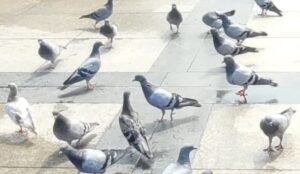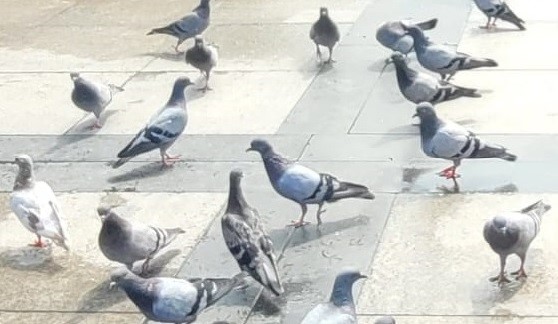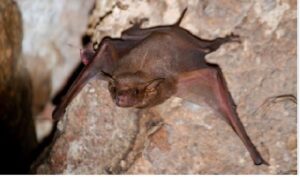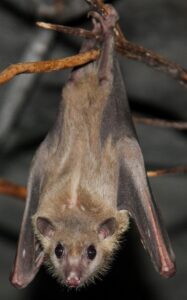Pigeon (Rock Dove):
General Description

- Pigeons have gray bodies with a whitish rump, two black bars on the secondary wing feathers, a broad black band on the tail, and red feet.
- The body color can vary from gray to white, tan and blackish.
- The average weight is about 300-400g, and the average length is 30 cm.
Life Cycle and Common Characteristics
1. Reproduction:
- Pigeons are monogamous (i.e., they have one mate at a time).
- The male cares for and guards the female and the nest.
- It reproduces in the 4-6th month and broods 2-3 times a year.
- The female lays 1 or 2 eggs after 8 to 12 days of mating.
- Eggs hatch after 18 days.
- The squabs are fed a secreted substance called pigeon milk.
- The young are raised for 4-5 weeks by the parents. More eggs are laid before the first young are weaned.
- Breeding may occur during all seasons, but peak reproduction is in the spring and fall.
- The population consists equally of males and females.
- Wild pigeons can live for 15 years, and sometimes longer.
- In typical urban environments, however, most pigeons do not live for more than about three-and-a-half years.
- This bird is a resident.
2. Habits and behaviors:
- The pigeon is the most serious urban bird pest in the UAE.
- They frequent parks and sidewalks, feeding on food provided by people.
- They use city bridges and buildings that provide roosting, loafing, and nesting sites. They also inhabit farmyards, livestock facilities, grain elevators, feed mills, and other buildings.
- In cities, pigeons tend to move in flocks of several hundred, which frequently move about, fly, and roost together.
- Occasionally, a smaller group will select a house or a few houses on which to roost, but in general, they prefer large buildings.
- Pigeons inhabit roofs, ledges, drain spouts, lofts, steeples, caves, and ornate architectural features of buildings where openings allow for roosting, loafing, and/or nest building.
- Pigeons do not construct a typical bird nest. Instead, their nests consist of sticks, twigs, and grasses and are built in the crevices of rocks.
3. Feeding:
- Pigeons feed mainly on grains and seeds, as well as snails and spittle.
- An adult pigeon consumes about 1 lb. of food per week.
- The ingested food is digested with the aid of gravel or sand, which serves to grind food in the gizzard, or digestive organ.
- Pigeons must have water.
- Healthy pigeons can exist for several days without food, but they require water each day.
- Resting, nesting, and roosting sites are frequently located in protected areas up high on structures.




